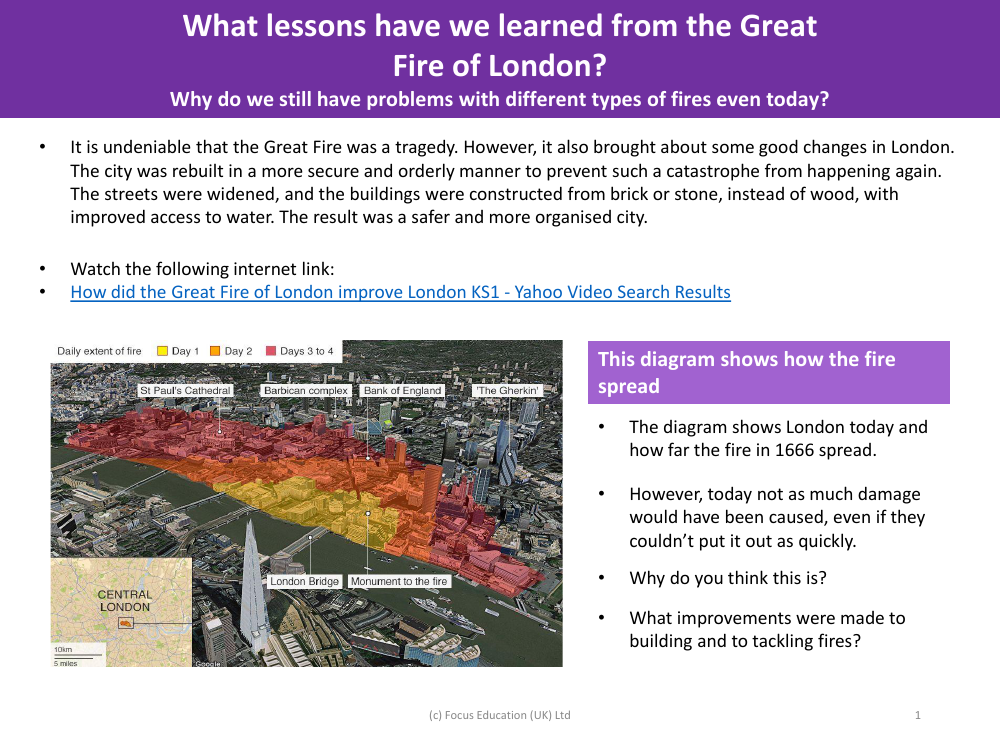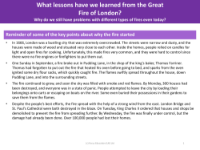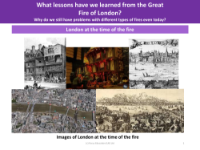How the fire spread - Info sheet

History Resource Description
The Great Fire of London, a catastrophic event in the city's history, ultimately led to significant urban improvements. Following the fire, London underwent a transformation to enhance safety and prevent future disasters of a similar scale. The narrow streets were made wider, and a new building code mandated the use of brick or stone instead of wood, which was more flammable. These changes, along with better access to water, resulted in a more secure and well-organised city, reducing the risk of such devastating fires in the future.
A diagram illustrating the extent of the 1666 fire in comparison to modern-day London reveals that if a similar event were to occur today, the impact would likely be less severe. This is due to the advancements in building regulations and fire-fighting techniques developed since the 17th century. The Great Fire taught us valuable lessons about urban planning and emergency response, which continue to influence how we build cities and tackle fires. Despite these improvements, we still face challenges with various types of fires today, reminding us that vigilance and continuous innovation in fire safety are necessary.





